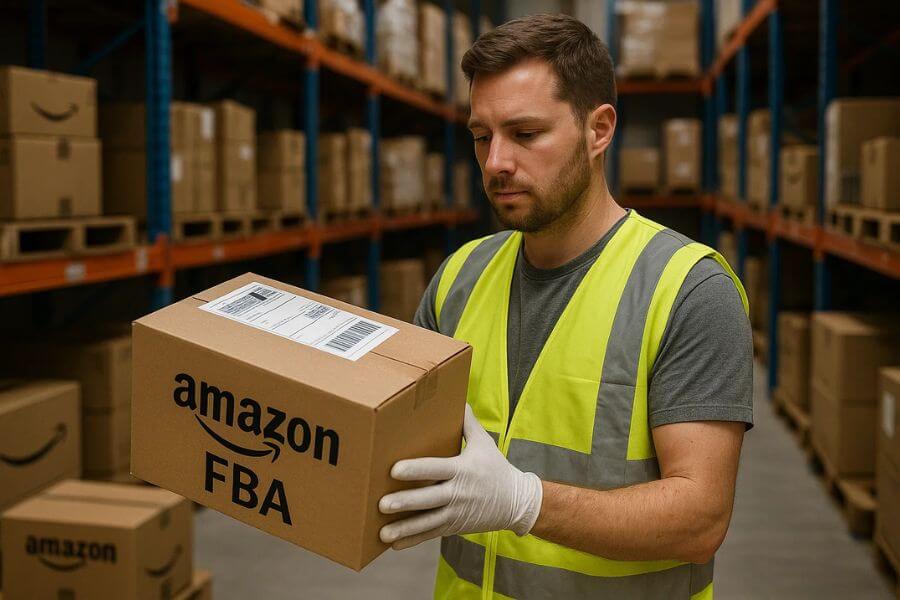Shipping is an integral part of the ecommerce experience, and it can significantly impact customer satisfaction and loyalty. In fact, the shipping process is often the final touchpoint in a customer’s journey with your business, and it’s the moment when their perception of your brand is solidified. When shipping goes smoothly, it enhances the overall customer experience and fosters repeat business. But when things go wrong, it can lead to frustrated customers, negative reviews, and even lost sales.
In this blog post, we’ll explore 10 common shipping mistakes that can hurt customer satisfaction and offer practical solutions to avoid them. By understanding and addressing these issues, you can ensure your customers’ expectations are met or exceeded, ultimately leading to a better experience for them and better business outcomes for you.
1. Not offering clear shipping information
Clear and transparent shipping information is essential for managing customer expectations. When your shipping details aren’t clearly stated, it can lead to confusion and frustration, leaving customers unsure about when their orders will arrive or how much they’ll have to pay for shipping.
Many ecommerce businesses fail to provide adequate shipping details until the checkout process or even after the purchase is made, which can create a sense of uncertainty for customers. This uncertainty can result in abandoned carts, negative reviews, or customer dissatisfaction, even if the rest of the order process goes smoothly.
How to avoid it
- Provide shipping details early: Clearly display shipping costs, estimated delivery times, and available shipping options before customers proceed to checkout. This information should be visible on product pages, in the cart, and during checkout to avoid any surprises later.
- Set clear delivery estimates: Give customers a precise idea of when they can expect to receive their orders. Use an estimated delivery date based on their location and the chosen shipping method.
- Offer tracking options: Once the order is processed, send customers a confirmation email with tracking information. Allow customers to track their orders in real-time on your website or through email notifications.
- Be transparent about any restrictions: If there are any shipping restrictions, such as areas that can’t be serviced or limitations on certain products, make sure these are clearly stated before customers commit to their purchase.
2. Failing to provide accurate shipping costs
Unexpected shipping costs are one of the most common reasons for cart abandonment. When shipping fees aren’t disclosed upfront or are only revealed at the end of the checkout process, customers may feel frustrated or misled. High or hidden shipping fees can turn a seemingly affordable product into an undesirable purchase, causing potential customers to back out before completing their order.
How to avoid it
- Be upfront about costs: Clearly display shipping costs as early as possible during the shopping process, ideally on product pages or in the shopping cart before checkout. This allows customers to make an informed decision about their purchase.
- Offer free or flat-rate shipping: If possible, offer free shipping for orders over a certain amount, or implement flat-rate shipping to give customers a clear and predictable shipping cost. This transparency can significantly reduce cart abandonment rates.
- Provide multiple shipping options: Allow customers to select different shipping options based on their needs. Offer choices like standard, expedited, and same-day delivery, with prices clearly marked for each option, allowing customers to choose the one that fits their budget and urgency.
3. Shipping delays without communication
There are times when delays are unavoidable, whether due to weather, carrier issues, or stock shortages. However, the real issue arises when you fail to communicate these delays to your customers. When customers are left in the dark about the status of their order, it can create feelings of frustration and distrust. Silence only adds to the problem, especially when the delay was preventable or foreseeable.
How to avoid it
- Proactively notify customers: If you anticipate a shipping delay, notify your customers immediately, even if it’s just to let them know the order is taking longer than expected. Keep them informed about the status of their order throughout the process, providing updated delivery estimates.
- Explain the reason for the delay: Transparency is crucial. If there’s a legitimate reason for the delay, such as supply chain issues or adverse weather conditions, explain this to your customers. This can help them understand that the delay is beyond your control and foster a sense of trust.
- Offer compensation or alternatives: If the delay is significant, consider offering compensation, such as a discount on future purchases or free expedited shipping on their next order. In some cases, you may want to offer an alternative shipping method or an upgrade to keep the customer happy.
4. Using adequate packaging
While shipping speed and accuracy are critical, the condition in which products arrive is just as important. Poor packaging can result in damaged items, which can lead to frustrated customers, returns, and negative reviews. Inadequate packaging doesn’t just affect fragile items, but all types of products, especially those with complex shapes or heavy weight.
How to avoid it
- Use sturdy, appropriate packaging materials: Invest in high-quality packaging materials that can withstand the rigors of transit. Ensure that your packaging is specifically designed to protect your products from impacts, drops, and environmental factors.
- Test for durability: Before shipping your products to customers, perform tests to see how well your packaging holds up during transit. This can help you identify weak points in your packaging process and allow you to make adjustments as necessary.
- Offer premium packaging for high-value items: For luxury or delicate items, consider offering premium packaging options to ensure they arrive in perfect condition. This can also enhance the overall customer experience, making your brand appear more professional and reliable.
5. Not offering international shipping or limited coverage
With the rise of global ecommerce, it’s important to consider expanding your shipping options to cater to international customers. Limiting shipping to just one country or region can significantly restrict your potential customer base. Customers from different countries are increasingly looking to shop from international brands, and failing to offer international shipping can cause you to lose out on a large market.
How to avoid it
- Expand your international shipping options: Partner with global carriers or 3PL providers to offer international shipping to key regions. Make sure to consider the logistics of customs clearance, import taxes, and tariffs to ensure smooth deliveries.
- Be transparent about international shipping costs: Provide clear international shipping cost calculators on your website, so customers from abroad can get an idea of how much shipping will cost before they make a purchase.
- Offer multiple payment options: Ensure that your international customers have access to secure and convenient payment options like PayPal, credit cards, and local payment methods, making it easier for them to complete their purchase.
6. Incorrect shipping information
Shipping errors due to incorrect or incomplete information can delay the delivery process and lead to undelivered or returned packages. This is especially common if customers provide wrong addresses or miss key details like apartment numbers. When these mistakes occur, the burden of correcting them falls on your business, often leading to delays and frustration on both sides.
How to avoid it
- Implement address verification systems: Use address validation tools to ensure that the shipping address entered by customers is correct and complete before they place their order.
- Send confirmation emails: After a purchase is made, send an order confirmation email with the customer’s shipping details for review. This gives them a chance to verify their information and alert you to any discrepancies.
- Make it easy for customers to update their information: Allow customers to easily update their shipping information within a reasonable time frame before the order is shipped.
7. Overlooking order tracking
Order tracking is essential for customer satisfaction. Without tracking, customers have no way of knowing where their order is or when it will arrive. This lack of visibility can lead to customer anxiety, especially if an order is delayed or misplaced.
How to avoid it
- Provide tracking numbers immediately: As soon as an order ships, provide customers with a tracking number via email or SMS. This allows them to track their package in real-time, offering them peace of mind.
- Update customers on delivery status: Send proactive updates when the order is out for delivery or has been delivered. This will keep customers informed and reduce the number of inquiries you receive about order status.
8. Not offering same-day or expedited shipping
Some customers may need their orders quickly, whether it’s a last-minute gift, an urgent need, or simply the desire for faster service. If your business doesn’t offer same-day or expedited shipping, you could be missing out on customers who are willing to pay extra for faster delivery.
How to avoid it
- Offer expedited shipping options: Provide customers with the option to choose faster delivery methods, such as expedited or express shipping, at checkout.
- Consider same-day shipping: For local orders or time-sensitive products, offer same-day shipping or next-day delivery options to appeal to customers looking for immediate service.
- Promote faster shipping at key times: During busy shopping periods, such as holidays, offer expedited shipping as a promotional option or incentive for customers to make a purchase.
9. Ignoring customer complaints about shipping
When shipping issues arise, such as delays, damaged goods, incorrect deliveries, or failing to address customer complaints in a timely manner can seriously damage your brand’s reputation. Customers expect quick resolutions, and ignoring their concerns will only escalate their frustration.
How to avoid it
- Implement a dedicated customer service team: Ensure that your customer service team is trained to handle shipping-related inquiries and complaints efficiently.
- Respond to complaints quickly: Aim to respond to all customer complaints within 24 hours. If a resolution will take longer, keep the customer informed about the steps you’re taking to address the issue.
- Offer solutions: Provide customers with an easy way to return damaged or incorrect products, and offer refunds or replacements when necessary. This can help restore their trust and prevent negative reviews.
10. Not monitoring carrier performance
Your shipping carrier is an extension of your business, and their performance directly impacts your customers’ satisfaction. If you’re consistently experiencing delays, lost packages, or damaged goods, it may be time to reevaluate your choice of carrier.
How to avoid it
- Evaluate carrier performance regularly: Assess the performance of your shipping partners on a regular basis, looking at factors like delivery times, damage rates, and customer feedback.
- Diversify your carriers: Use a combination of carriers to minimize the risk of delays or poor service. For example, you could use one carrier for domestic deliveries and another for international shipments.
- Switch to better-performing carriers: If you consistently have issues with a particular carrier, consider switching to one that offers better service and reliability.
Conclusion
Shipping is much more than just getting a package from point A to point B; it’s an essential part of the customer experience that can either enhance or damage your reputation. By avoiding these 10 common shipping mistakes, you can improve your shipping process, increase customer satisfaction, and foster long-term loyalty.
Remember, the shipping process is an opportunity to delight your customers, build trust, and set your brand apart from the competition. By being proactive, transparent, and responsive, you can turn shipping from a potential pain point into a customer satisfaction driver.





